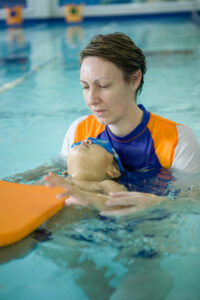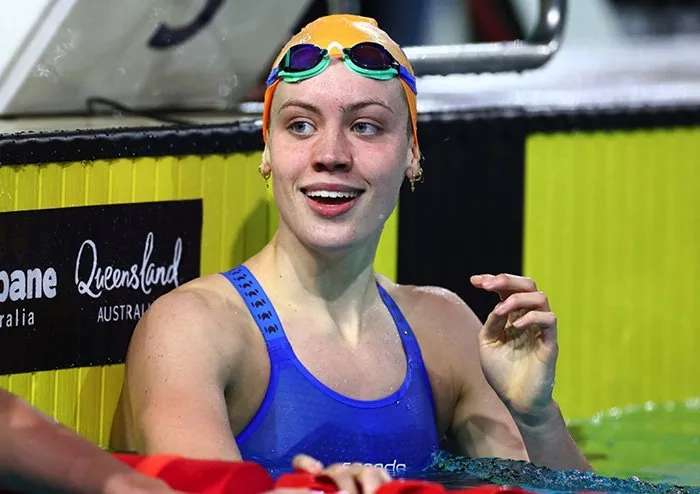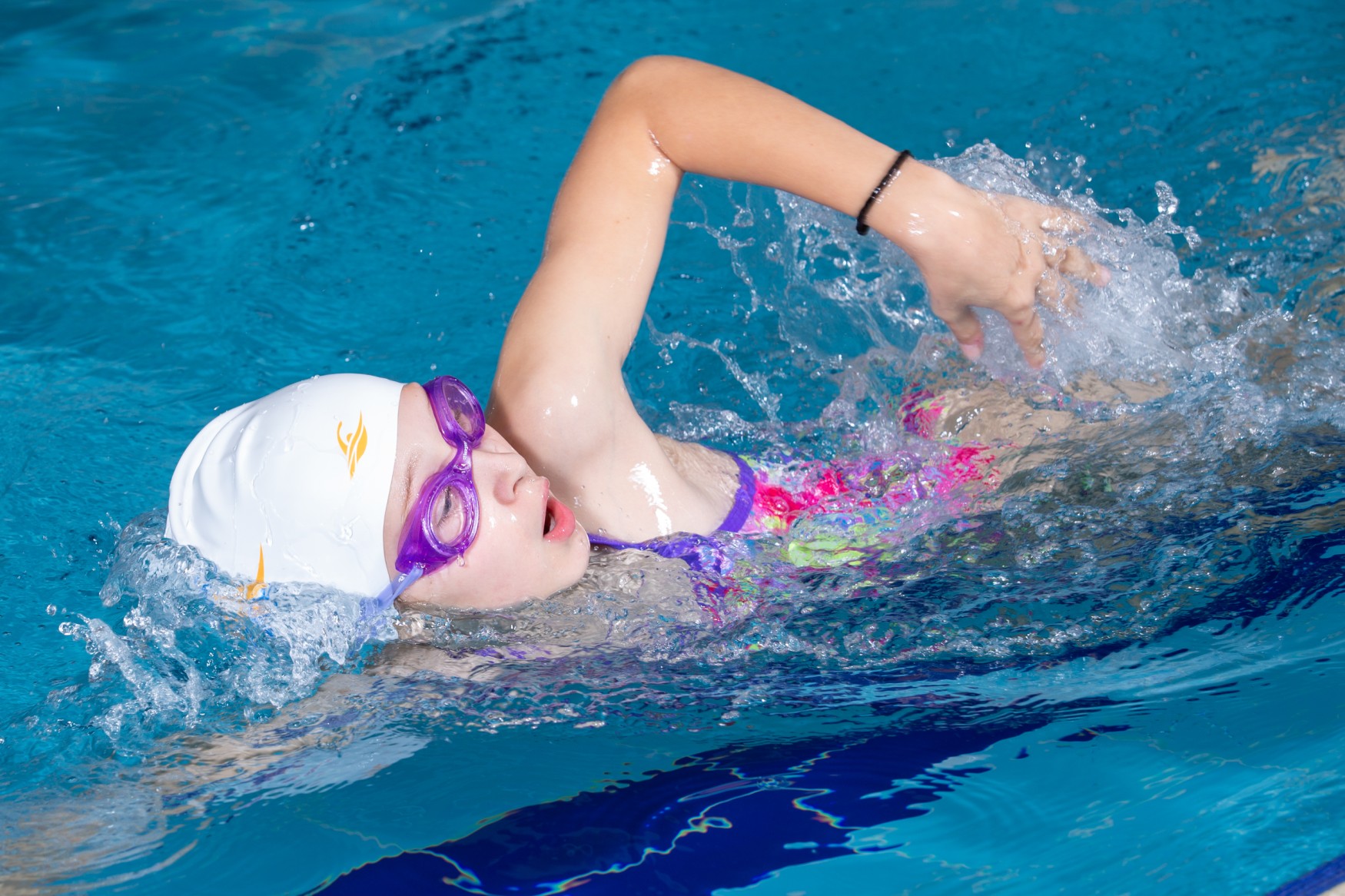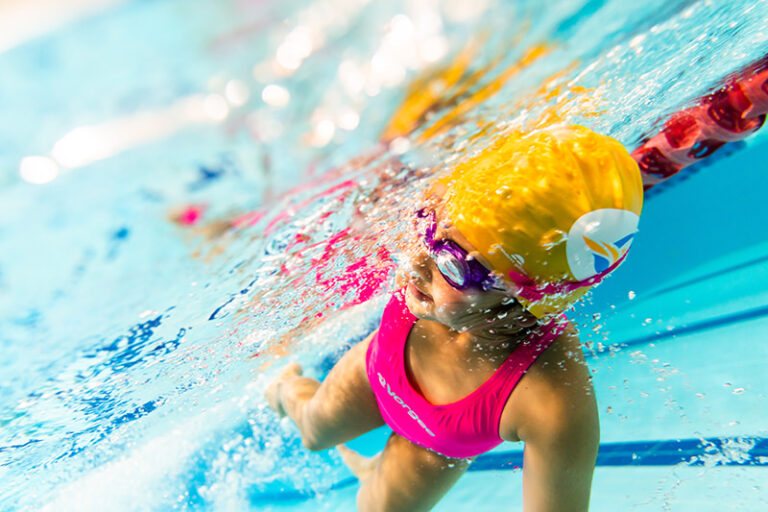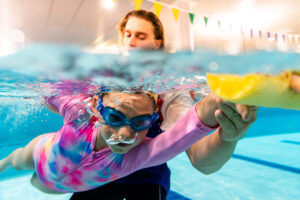
If you are looking for the best swimming lessons for beginners, how do you tell the difference between an average and a great swimming school? No matter your age, swimming is a vital skill that could save your life, it pays to learn the right way.
We all want the best swimming lessons. No one wants to see their children flounder, trying hard but not progressing. It would be even worse to take your child to swimming lessons and have them not feel safe and comfortable.
Carlile swimming is regarded as one of the world’s leading swim schools. The following is based on their expert view on what to look for when searching for a swim school for beginners of any age. First we examine children (we look at adult lessons further down).
The best swimming lessons for Children
- Safety – Learning to swim is first and foremost about safety. When you visit a swim school ask them about the measures they take to ensure children are safe. Ask for their child safety policies, do they use supervisors to observe classes and spare teachers to assist when needed? For example, a swimming teacher should never be in the water with a child without someone else watching. During classes with small children teachers should never turn their backs on them. If a child slips from a ledge the teacher needs to be able to react instantly..
- Friendly and caring. You can tell a lot about a swim school just by watching a few lessons. Are the teachers happy and using positive reinforcement with the kids? Are the children enjoying themselves?
- Fun is a must. Children learn through games and repetition. If it’s fun they will want to come back.
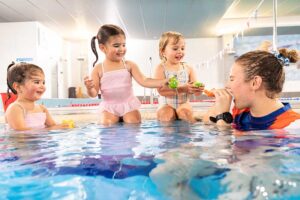
- Warm water & air. Children feel the cold, if the water and air temp isn’t warm odds are they won’t like their swimming lessons and won’t want to go. Ideally the water temp should be around 32 degrees for small children. Warm water not only makes swimming more enjoyable but it also improves circulation. So find a swim school that is indoors, has heated water and heated air with good circulation. Air flow via great filtration is important. You don’t want to feel uncomfortable by chlorine hurting your eyes.
A teacher or guardian supporting smaller children.
Most babies love the water, they have spent nine months surrounded by fluid in the womb so it can be comforting. Carlile recommends babies can start being in the water with their parents at water confidence lessons from three months. At this stage their immune system is developing and they have had their first rounds of vaccinations. For babies and young toddlers, having an adult supporting them is a must. By having a parent with them, young children feel reassured and it’s a great bonding experience.
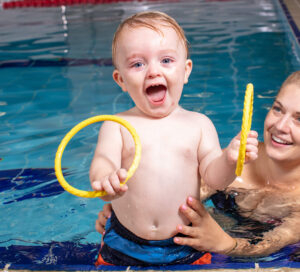
- Shallow water is imperative. Once children start lessons without their parents they need to be able to feel safe. The pool should have ledges for them to sit on and as they get a little older and start swimming on their own they should be able to stand. That way if a child panics they can put their feet on the floor and know they will be ok. By being able to touch the ground, swimmers are more relaxed. Being relaxed helps calm the muscles and improves breathing, which improves buoyancy for swimmers.
Other keys to children learning
- No floaties. Carlile swimming does not believe in teaching swimming to beginners with floaties. They give a false sense of security for both the child and parents and make it difficult for the child to get in the right body position to learn how to float and eventually swim.
- Learning with and without goggles. Most drownings involving young children are the result of falling into water. The odds are when they fall they will not be wearing goggles. They need to be accustomed to swimming without them so they don’t panic and keep their eyes closed. Swimming with goggles is also important in seeing what you are doing and developing good technique.
- A program that builds from one level to the next. You should look for a program where each level builds the foundations for the one to follow. One that doesn’t promote children before they are ready so that when they do move up a level they will do it with confidence.
- A program that develops great technique. Correct technique drastically improves overall swimming efficiency, speed and confidence. It also ensures that a child will be able to swim for longer periods of time. This is particularly important in a case of emergency.
Understanding the dangers.
Make sure your potential swim school gets the basics right. That children are not running around the pool, or jumping and diving into shallow water. There should be supervisors watching lessons at all times and spare teachers to help if children are having difficulty.
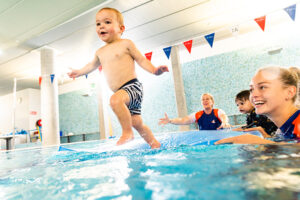
Not enough children are learning
Research reveals more than 40% of Australian children graduating from primary school can’t swim 50 metres or keep themselves afloat for two minutes. The experts at Carlile don’t believe these milestones are good enough. It’s a national crisis and lives will be lost. If you’d like more information on when your child should start swimming you can find that here.
More information on swimming lessons for beginners
A good swim school will take a beginners age into account but it shouldn’t use age as a criteria for placing a child into any class other than with babies. Putting babies in the water with a stranger is too stressful. Being in the water with them is also great learning for you.
After waterbabies, groupings should be based on ability and skill level not age. While children need to be challenged they shouldn’t be pushed beyond their level because it can impact their confidence and self esteem. Check Carlile programs that are suited for beginners.
The best swimming lessons for Adults
Now let’s look at teaching adult beginners.
- Shallow warm water. Similar to children, adults who are starting swim lessons should be in a shallow pool. Being able to touch the ground is important so that if they become anxious they can stand and feel safe.
- Starting with the basics – learning to float, being confident submerging, being able to correctly “bubble and breath” is a must before you start to swim. Look for a swimming school that helps you confidently do those things before pushing you too quickly.
- Great technique. The other messages above about looking for a program where each level builds on the next is just as important for adults. In the end you want to swim well. Great technique will make you a much more efficient swimmer. That means you can swim for longer without becoming tired and that can save your life in a dangerous situation.
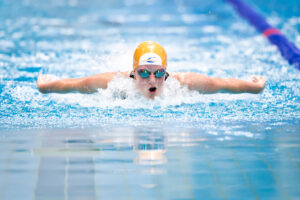
The first steps in learning how to swim
There are five key steps that the best swimming lessons will help a beginner learn:
- Water confidence: To build a beginner’s water confidence, they need to feel comfortable and in control. To do this, a newbie needs shallow water to feel completely at ease. At Carlile, for instance, ledges, mats, and extra teachers are utilised to provide security and give students a sense of control.
- Breath control: Successful swimming involves breathing control, not just the ability to hold your breath underwater. Beginners will learn how to blow bubbles, which teaches them how to breathe fully before exhaling underwater when swimming.
- Free-floating: The fundamental skill of learning to swim is free-floating, which should only be practised once swimmers have successfully learned breath control. Swimmers must learn about natural body buoyancy to feel at ease and secure in the water. It can also save your life if ever in a dangerous situation.
- Submersion: After learning breath control and free-floating, then comes submersion. This is the foundation of swimming and once the swimmer can submerge confidently, then strokes and techniques can be introduced.
- Propulsion: After the steps above, propulsion is introduced. The amount of forward momentum produced by a swimming stroke is known as propulsion. Arm and leg motions can be used to generate propulsion and is what enables a swimmer to go through the water very fast when paired with minimal drag.
You’ll find more information on adult swimming here
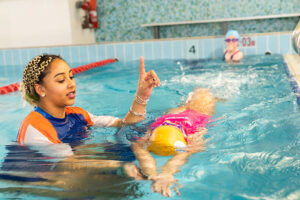
Swimming lesson games for beginners
Having fun and playing games is the best method for newbies to learn the skills they need to swim confidently.
Beginners are more willing to participate when instructors implement games and activities that make learning fun and enjoyable. Games are an excellent method to build swimming skills and even teach them how to combine one ability with another.
Research shows that having fun increases motivation, inspires learning and retention. So when people look like they are just having fun, they are learning.
Safety for beginner swimmers
Excellent swimming schools teach water safety concepts, encourage safe behaviour near water, and assist swimmers in acquiring good technique to help them be safer in and around water.
Note we used the word safer, no child is ever completely safe around water, find out the ways your child can be SAFER .
